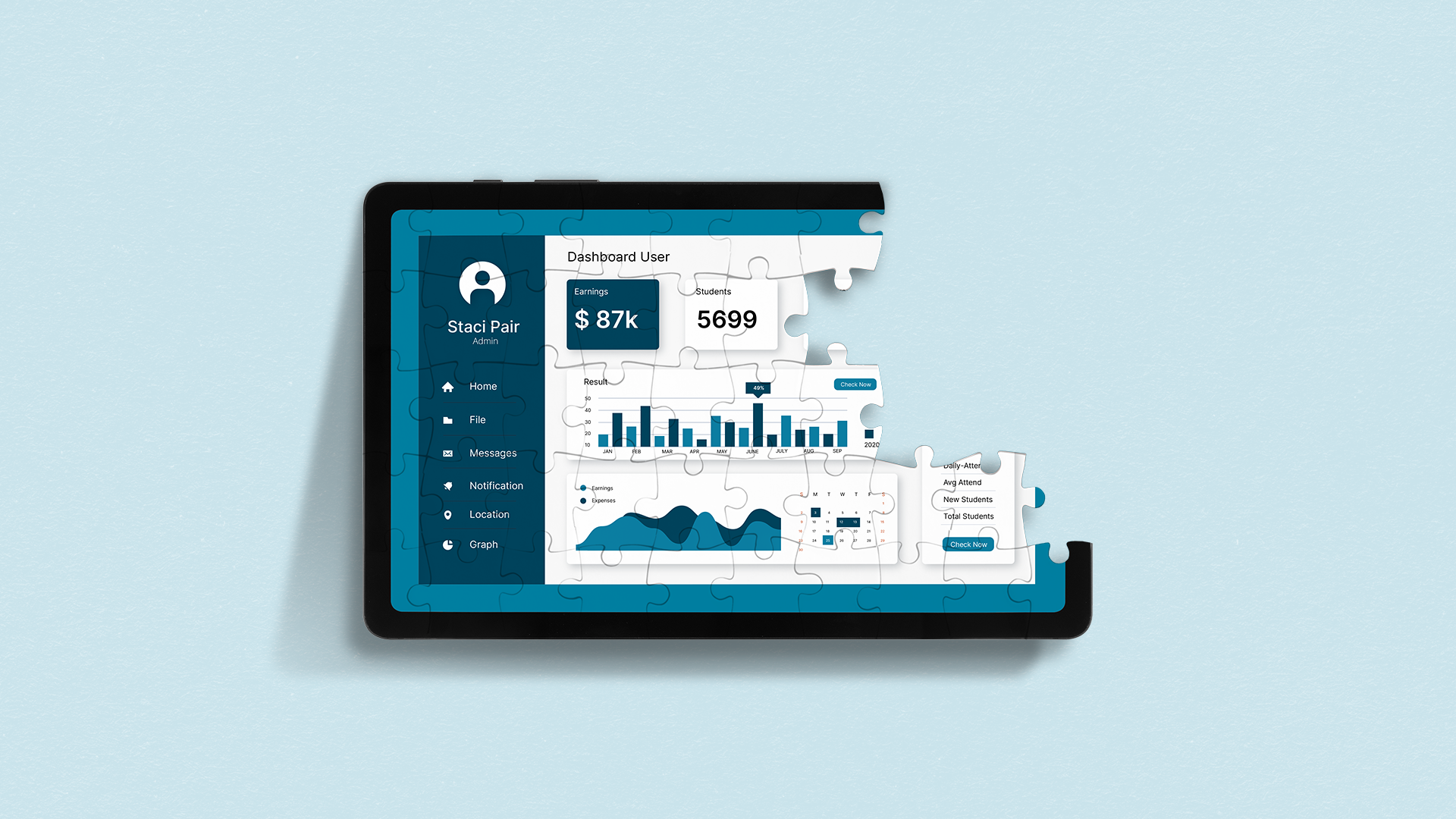A deep dive into the future of higher education partnerships from the Post-OPM symposium
On March 5–6, an event convened by Noodle assembled a diverse group of stakeholders in higher education to discuss the evolving landscape of online program management (OPM).
The symposium “Post OPM: Exploring the Future of Higher Education Partnerships” featured a dialogue among university leaders, top consultants, practitioners, government officials, and journalists focusing on the transitional phase towards a post-OPM era in higher education.
This brief gathering underscored the urgent need for understanding the shifting dynamics in education, exploring new pathways for progress and innovation in academia, and facilitating continued dialogue.
As we continue moving toward a post-OPM landscape, we’re creating a series of articles outlining the key topics discussed at the symposium. In Part 1, we’ll shed light on these five critical discussions that shaped the event and the challenges and opportunities that lie ahead as institutions increasingly move away from traditional OPM models:
- The State of OPMs (How are perceptions and models shifting?)
- Escalation of Colleges in the Online Space (How can institutions expand online reach?)
- Management of Data (How can schools harness data to revolutionize higher ed?)
- Financial Considerations (How will federal regulations affect the industry?)
- Optimizing Collaboration in Public-Private Partnerships (How can partnerships address challenges?)
The State of OPMs
More than 70% of academic leaders believe online learning is a critical component of their long-term strategy. How do we move forward in an era beyond traditional OPMs?
Originally, the term OPM stood for services that helped universities transition programs online, handling everything from course design to recruitment. However, this acronym has become somewhat restrictive and misleading given schools’ expanding range of services and changing needs. Many perceptions around OPMs have shifted as stakeholders recognize the need for more flexible and tailored online solutions.How universities approach those solutions requires flexible thinking.
According to Noodle’s CEO and founder, John Katzman,
“Some of these challenges are only going to be solved by building a bridge between a university’s big-picture strategy and its day-to-day performance. This can mean looking at education problems through the lenses of education, technology, marketing, and recruiting, or considering that marketing problems are potentially solvable by changing the pedagogy or the program design. No matter what the challenges are, the solutions will come by bringing together experts to approach them from multiple angles.”
Perceptions around third party servicers have changed, too. They became crucial for many venturing online, but dependency on them also opened the door to less scrupulous operators who did not always prioritize the best interests of schools or students.
The models of partnership between universities and service providers are also changing. It’s important to build more strategic partnerships that align with institutional values and missions, but there are challenges—such as limited funding, lack of expertise, and outdated technology infrastructures—that hinder self-sufficiency. Consequently, there’s a debate between collaboration, offering quick scalability and advanced technology, and self-sufficiency, which provides greater control and alignment with institutional values.
These factors have led to the growing realization that traditional OPM models may not serve the best interests of all parties, and that perceptions around OPM—and education—must change.
To reframe these perceptions about education, updates to the Carnegie Classification system may help institutions better articulate their unique strengths and challenges. This approach could lead to better-targeted policies and more meaningful community engagement, as outlined in the Carnegie Classification of Institutions of Higher Education.
The bottom line? The move towards more innovative partnership models marks a critical evolution. Though this transition includes many challenges, the focus remains on creating models that foster educational excellence, financial transparency, and the strategic alignment of goals. This symposium set the stage for continued exploration and redefinition of what successful partnerships can look like in this new era.
Escalation of Colleges in the Online Space
The transition towards more autonomous online program management highlights the challenges and strategies involved in expanding institutions’ online reach and impact. Robust partnerships, innovative practices, and an inclusive approach that considers stakeholders’ diverse needs are critical.
Adapting to Demographic Shifts and Excess Supply—Demographic shifts are forcing institutions to innovate and reinvent their offerings to remain competitive. Models that were once effective may need adaptation to meet the needs and expectations of more diverse students.
Scaling Local Brands Nationally—Local or regional institutions scaling their educational brands to a national audience may face challenges. Costs for marketing, student recruitment, and competitive positioning are substantial, often requiring new strategies and considerable investment.
Countering Faculty Resistance—Faculty members’ involvement in program development and delivery is vital for curriculum design and maintaining academic integrity and standards. Engaging them early in the planning stage can help mitigate resistance and ensure online growth is sustainable and aligned with goals.
Management of Data
Every day we’re generating more data than the one before. How can institutions harness this wealth of information to revolutionize education?
As institutions shift away from traditional OPM models, managing data becomes increasingly critical; universities must overhaul strategies used to do so. Data permeates educational administration and delivery, driven by the goals of enhancing student service and making strategic, data-informed decisions across their operations.
Data literacy challenges must also be addressed. As data becomes an operational cornerstone, stakeholders need a basic understanding of its effective and ethical use. Solving this gap is essential for fostering an environment where data-driven decisions are embraced and executed competently.
Financial Considerations
The topic of money is never far away in higher ed. Educational technology consultant Phil Hill moderated a panel discussion, penning an excellent followup article that noted the same thing:
“I found that the term “Post OPM” acted as a Rorschach Test for panelists with differing views on what that phrase means. But those struggles highlighted something that is going to need to be addressed—the issue of money and academia’s lack of a grasp about what the economics have been and will be around online and blended programs.”
Hill’s symposium panel, co-moderated with Bob Shireman, Senior Fellow with The Century Foundation, and Robert Moran, Principal with Bose Public Affairs Group, addressed questions about education policy and regulation, including:
Federal Limits on University Marketing Spending—Will the federal government impose restrictions on university spending in digital marketing?
Quality of Graduates vs. Quantity of Marketing—Can institutions align marketing strategies with their core mission of educational excellence and integrity?
Measuring—and Valuating—Educational Quality—Are we ready for more transparent and effective measures of educational quality to guide both policy and practice?
The financial realities of higher ed, potential pending regulations, and the impact on both for- and nonprofit institutions are undoubtedly an important issue in the industry. Follow this series for a later article where we’ll look into the panel discussion and these topics in greater detail.
Optimizing Collaboration in Public-Private Partnerships
What happens when the tools we use no longer fit the job at hand? In higher education, this question is leading to a radical rethink of partnerships and technologies.
The evolution of online education has highlighted the potential and pitfalls of public-private partnerships (PPPs). Well-structured collaborations aligned with educational missions can drive significant advancements in the quality and reach of offerings. But leadership must ensure these collaborations prioritize educational rather than administrative objectives. Private sector partnerships play a crucial role in meeting educational needs, offering scalable, tailored solutions that may be out of reach for some DIY institutions.
Stephen Green, Noodle’s Chief Partnership Officer, puts it this way,
“When speaking about the ‘build versus buy’ concept, there’s a general premise that not everyone does everything well. And not everyone needs to do everything well; collaboration has been able to figure out what institutions can do, what the private sector can do, and how those come together. What we’ve seen as a partner is that universities gain our expertise and perspective on how they can successfully innovate and drive their institutions forward, and we move together in a way that puts students in the best position.”
Effective PPPs require clear communication from the outset, with precise metrics on financial outcomes, educational quality, and access in order to evaluate success. Partnerships designed with these objectives can create more sustainable, impactful outcomes.
But the focus of any partnership should be on student and faculty outcomes, including enhancing learning experiences, research capabilities, and academic achievements. There’s a delicate balance between financial sustainability, quality education, and innovative collaborations, and these considerations help shape the future of online education.
Exploring the Alternatives
Higher education is seeking alternatives to traditional OPM models and DIY approaches that meet evolving demands and capabilities. Universities are engaging internal resources and external partnerships to navigate these dynamics while striving to meet enrollment goals and satisfy student needs.
Collaboration vs. Self-sufficiency—Adapt through PPPs or invest in internal capabilities? Collaboration offers a quick route to scalability and access to advanced tech, while self-sufficiency fosters greater control and alignment with institutional values.
Institutional Challenges—Limited funding, lack of expertise, and outdated technology infrastructures require a delicate balance between budget constraints and innovation. Staying competitive and relevant often involves tough decisions that affect financial stability, educational quality, and technological upgrades.
Private Sector Partnerships—These collaborations provide scalable, tailored solutions that might be out of reach for institutions on their own, but they can lead to enhanced offerings and administrative efficiencies, particularly for institutions without the resources to compete alone.
There’s no one-size-fits-all answer. We shouldn’t limit our thinking to OPM or DIY, because solutions of the near future will more than likely involve some combination of OPM and DIY, depending upon institutions’ needs and capacity.
What’s on the horizon?
The symposium illuminated a path forward, highlighting the importance of agility, strategic alignment, and ongoing technological and pedagogical innovations. As higher education continues to adapt, it becomes increasingly clear that more flexible, integrated approaches must be considered in order to thrive.
Stay tuned for more articles covering post-OPM topics from the symposium and the industry.



